- Home
- Michael Ondaatje
The Conversations: Walter Murch and the Art of Editing Film Page 3
The Conversations: Walter Murch and the Art of Editing Film Read online
Page 3
But I went through a whole late-adolescent phase when I thought: Splicing sounds together can't be a real occupation, maybe I should be a geologist or teach art history.
O: Did you think of going into the sciences at all?
M: No. Although I was interested in them—and interested in math—as revelations of hidden patterns. What you do as an editor is search for patterns, at both the superficial and ever deeper levels—as deep as you can go.
The fact is that there is always much more film shot than can ever be included in the finished product: on average, about twenty-five times too much—which would mean fifty hours of material for a two-hour film. Sometimes the ratio is as high as a hundred to one, as it was on Apocalypse Now. And films are almost always shot out of sequence, which means that on the same day the crew could find themselves filming scenes from the beginning, the end, and the middle of the script. This is done to make the schedule more efficient, but it means that someone—the editor—must take on the responsibility for finding the best material out of that great surplus and putting it in the correct order. Although there is a universe of complexity hidden in those short words “best” and “correct.”
When it works, film editing—which could just as easily be called “film construction”—identifies and exploits underlying patterns of sound and image that are not obvious on the surface. Putting a film together is, in an ideal sense, the orchestrating of all those patterns, just like different musical themes are orchestrated in a symphony. It is all pretty mysterious. It's right at the heart of the whole exercise.
Walter Murch was nicknamed Walter McBoing-Boing after the fifties cartoon character who talked in sounds.
HIGH SCHOOL CONFIDENTIAL
O: How did you go from being that boy in New York to someone working in film in California?
M: I was studying art history and Romance languages in Italy and Paris, in '63–'64, the height of the French New Wave. I came back to the States buzzing with the idea of film, and then I realized that there were actually schools where you could study it, which I found incredible, delicious, almost absurd. I applied to a number of them, and miraculously won a scholarship to the graduate program at USC. Strangely enough, I only discovered that films needed sound when I got there: it was a revelation to me that the sound had to be recorded separately from the image and “cooked”—edited and mixed—before it was finished. But I immediately saw the connection with what I had been doing twelve years earlier, and that was exciting.
O: You were at film school with other filmmakers you would later work with— Francis Coppola and George Lucas?
M: Francis was across town at UCLA, but George was a fellow student at USC. UCLA and USC were naturally rivals, but we all knew each other. UCLA accused us of being soulless sellouts to technology, and we accused them of being drug-crazed narcissists incapable of telling a story or wielding a camera. But it was a fraternal kind of jealousy, and underneath it all we were the same. Our general feeling in the mid-sixties was that American cinema was having a hard time. It was the tail end of the old Hollywood studio system and there had been a corresponding revitalization of European cinema, starting with Italy and Japan in the late forties, then the New Wave in France in the early sixties.
So when I graduated from USC in 1967, I found that the job opportunities for a film student were very poor in Hollywood. But one of the advantages of going to film school, on a practical level, is that you form friendships with people of like minds and interests. And those friendships created a kind of informal old-boys' network. If you have fifteen people in a group, the chance that one of them will get a job is pretty high. That's sometimes enough to lead to something else. My good friend Matthew Robbins had landed a job at Encyclopaedia Britannica Educational Films doing odd jobs and set construction, and when some other opportunity came up for him, he asked me, Do you want my job? I applied and was hired. Three or four months later one of the film-makers there, who was preparing a film on the function of the eye, asked me if I wanted to edit the film. I said, Fantastic!
James Caan and Shirley Knight in The Rain People, 1969, right. George Lucas and Francis Ford Coppola, opposite, on the set of THX 1138, which Lucas directed from a screenplay he wrote with Murch, 1970.
After Britannica I freelanced for a while, working briefly at Dove Films—a commercial production house owned by two cameramen, Cal Bernstein and Haskell Wexler—where I edited commercials for Foremost Milk and a documentary on modern art for the U.S. Information Agency. Then in December of 1968, about a year and a half after I'd left film school, I got a call from George Lucas. He and Francis Coppola had met. It turned out they had rented Cal Bernstein's equipment to shoot a film, The Rain People. Francis needed somebody to do the final sound, and asked me if I wanted to move to San Francisco and do that. He was thinking of basing American Zoetrope up there.
O: How well did you know George Lucas at film school?
M: We'd known each other since 1965, and I'd worked on a couple of his student films. We were the two finalists for a six-month Warner Bros. scholarship. As we were going in for our final interview, we realized, naturally, that one of us was going to get it—and the other one wasn't. So we made a pact that whoever did get it would turn around and help the other if something good came along.
Well, George got it. And when the chance came, he called me. He had met Francis at Warner Bros., where he was directing Finian's Rainbow. They bonded, for many reasons—not the least of which was that they were the only two people at the studio with beards. Francis subsequently wrote The Rain People, financed by Warner Bros., and hired George to shoot a documentary about the making of the film.
Walter Murch, above, and his Ducati 200 Elite in the Appenines during a trip from Perugia to Paris with Matthew Robbins, late summer 1963. Overleaf: The celebration of the opening of American Zoetrope and the completion of its first film, THX 1138. The group includes John Milius, Caroll Ballard, Jim McBride, Walter with cap; on extreme right, George Lucas and Francis Ford Coppola, 1971, on the roof of the Zoetrope offices, a former warehouse.
O: So you were asked to join them in San Francisco.
M: Right. Specifically to create the sound effects for, and mix, The Rain People,but also to be part of Zoetrope, which was a professional extension of the film school ideal. You know, when you're at that stage as a young person, the world is big and wide and open, and the idea of settling down in Los Angeles permanently was not on my mind. Aggie and I had gotten married in 1965, after I graduated from Johns Hopkins, and for our honeymoon we had driven cross-country on a motorcycle. Our son, Walter, was born in 1968, so I was now a dad. It was all extremely exciting and Zoetrope seemed a natural thing to do.
O: This was a new, independent company starting up—did it seem a great risk to all of you?
M: Well, for Francis there was a big risk, as it turned out. But not for us, other than the normal risk of plunging into the unknown, uprooting your family and not knowing what would happen. I remember George saying, Well, we may all be back in a year with our tails between our legs, but at least it'll be fun while we're doing it. Who knows what'll happen!
Most people in Hollywood thought what we were doing was crazy. But it was the late sixties, it was San Francisco, it was all part of what we saw then as the beginnings of the technical democratization of the filmmaking process— with comparatively little money you could actually go on the road and shoot a feature film, you could locate wherever you wanted.
Also, the mood in Hollywood at that time was down. Some of the old studio bosses were holding on—Sam Goldwyn, Jack Warner—but the old paradigm was no longer functioning. In retrospect you can see that something new was emerging, but it hadn't really happened yet. On a practical level, the unions were still quite restrictive. Without connections—and that went for all of us, none of us came from film backgrounds—the chance of getting employment in film was low. In fact, being a film student then was a strike against you. So, we thought, If it's going to
be low, why not make it low in an interesting place? Which is what we found San Francisco to be.
“STRANGE LIKE ME”by George Lucas
I met Walter in the darkroom at the University of Southern California. He never talked very much, so we got along very well. I think my first impression was that he was very tall.
I'm not sure what it was about USC in those years in the sound department … just the fact that there was a group of us who grew up with popular music. We were really focussed on sound. That department was designed architecturally so that the screening room backed into the patio where everybody hung out. If you had a good soundtrack in a movie, it would pull all the students into the screening room to see what was going on. It was there I realized that sound is really half the experience of this medium, and that the visual and sound combine to make the experience work.
What we were doing was pretty much trying to reinvent film, without knowing too much about the medium. We were sort of making things up as we went along. We were studying film in an academic way, but our relationship with the industry was fairly tenuous in those days.
Walter, even then, was quite superior at sound. Francis and I were travelling across the country, doing The Rain People, with about fourteen people altogether—a very, very small crew. We were talking about moving to San Francisco, and he was going to go to Germany which had a new mixing system he was going to buy. He said, Do you know anybody who knows anything about sound? I said, I know just the guy, he's a genius. There was only one person I thought could do that job. And that was Walter.
In school, I was very much an anti-story, anti-character kind of guy. I was of the San Francisco avant-garde film school and cinéma vérité, that sort of thing. I got the chance from Francis to do a feature, and he said, What are you going to do? I said, I can't write a script. He said, You'll have to learn to write if you're going to become a director. And I said, Oh, God! I went off and dutifully wrote a script and brought it back to Francis. He said, Well, you're right—you can't write a script! So we hired a writer—a very good writer, actually, a novelist and a playwright—and he wrote a script. He tried very hard to make it into something, but it wasn't at all what I wanted to do with the movie. That was extremely frustrating and Francis said, Let's go and spend a week on the boat. After a week, he said, This is not work-ing—is there anybody else who can help you with it? I said, Maybe Walter— he's strange like me, and probably we could work this out together. So Walter and I got together and started writing. It was very collaborative, we had the same sensibility in a lot of ways. You can see that THX 1138, while an attempt to do something normal, is at the same time strange, in a youthful, collegiate way, and also has the wild sense of humour that Walter and I share. We had a great time making that movie. It was a lot of fun. The film got a rather confused reception, but it has become a cult classic.
Sound was very important to us. In THX 1138 we decided we would create a soundtrack that was primarily sound effects–based—the music would operate like sound effects and the sound effects would operate like music. We carried that idea on to American Graffiti, where we took all the music and made it so that it would bounce around the environment and be part of it, as a sound effect rather than as music. Then we took sound effects and used them in the places where we really needed tension and drama—in two or three scenes where there's real drama going on. We pulled the music out and just used sound effects….
O: When you began to work on the sound edit of The Rain People, had the picture been edited?
M: When I started work, the editor—Barry Malkin—was going back to New York. He said, It's done, I'm going home. Francis is in Europe, he'll be back in a month or so. So there I was, in a cabin up Benedict Canyon, all alone with the film, a Nagra tape recorder, a Moviola, and a transfer machine, recording and adding the sound effects. I became a little paranoid—I was nonunion and an ex–film student working on a studio feature film—and I felt I couldn't go to any of the film libraries and get prerecorded sound. I was afraid they would ask, Who are you? What are you working on?
Plus I had never used libraries when I was at film school. I'd gone out and recorded everything myself. So that's what I did for The Rain People. I recorded all the sound effects —all the sound, except for the dialogue and music—and then organized it across a number of different tracks. We mixed The Rain People up in San Francisco in May of 1969 on the new KEM equipment from Germany that Francis had bought.
After that, I worked with George on the screenplay of THX 1138. The basis of THX was a treatment that Matthew Robbins and I had written as students. George, who was by his own definition not a writer, needed a script for a class he was taking, and had asked us, Aren't you going to do that underground thing? When we said no, he took it, renamed it THX 1138, and made it much more wonderful than our two-page outline.
So, as the wheel turned, George and I found ourselves in San Francisco in the summer of '69, collaborating on this feature-length version of THX. He started shooting in September. Quite fast, when you think about it. It didn't seem fast at the time, but now I see that it was.
Once they were shooting, I began to record the sound effects. George, after directing, also edited the film himself. We were working out of a little house in Mill Valley, where George and Marcia Lucas lived. There were three of us doing postproduction: George doing the editing, Marcia as George's assistant, and me doing the sound. I would arrive on my motorcycle at nine o'clock, start working, and at the end of the day go back to the houseboat, in Sausalito, where Aggie and I and Walter were living.
When the executives at Warner Bros. saw the director's cut of THX in June of 1970, they were so distraught they cancelled the development deal they had with Zoetrope. All the projects that were slated—Apocalypse Now, American Graffiti, The Black Stallion, The Conversation, and others—were abandoned. Not only that, they demanded all the development money back. It was out of this crisis that Francis considered directing The Godfather, as a way of making ends meet.
Murch holding THX 1138 which he had been editing with Lucas and his wife, Marcia, in the attic of Lucas's house in Mill Valley.
We were still finishing up THX 1138 as Francis was beginning to shoot The Godfather. Eventually we took THX to Cannes in May '71, but it was not a financial success when it was released in the States. That summer I started working on the sound of The Godfather. The movie really set Zoetrope up as a professionally recognized production company, a platform for films like American Graffiti, The Godfather Part II, The Conversation, The Black Stallion, Apocalypse Now. All those classic films from the 1970s were produced as a result of the success of The Godfather. Ironically, The Godfather was not the kind of film Francis wanted to make. Initially it was exactly the kind of big Hollywood film he wanted to get away from. But as he worked on it, he saw that he could infiltrate it, make it resonate with his interests, include personal details about Italian American life, and draw on his own style of filmmaking to turn it into a more European kind of American film. To that end, he specifically hired Nino Rota, Fellini's composer, to write the music for it.
Murch, left, with the clapper during the shooting of screen tests for THX 1138, August 1969. A scene, above, from THX 1138, a film which was based on a treatment that Matthew Robbins and Murch had written at USC and were going to make as a student film.
INFLUENCES
O: Was European filmmaking important to all of you? Who were significant role models for you?
M: Godard, Kurosawa, Bergman. Fellini—definitely. Kubrick's Dr. Strangelove.But Kubrick was already an exile from the Hollywood system. I didn't gravitate towards the Americans. It was the Europeans and the Japanese.
O: And Truffaut?
The houseboat, above, in Sausalito, 1971, which Murch built and where he lived with his wife, Aggie, and son, Walter. “The Kiss”: Aggie and Walter Murch, right, with their daughter Beatrice in the foreground, photographed by Coppola in his apartment at the Sherry–Netherland Hotel, 1974.
/> M: I remember viscerally the effect of the freeze-frame at the end of his The 400 Blows. It was electrifying, both dramatically and as a possibility of what you could do technically with cinema. It was the first time I'd seen anything like it.
O: Are there other moments that have affected you like that?
M: The use of slow motion in The Seven Samurai. There's a thief who holds a little girl hostage in a house. The head samurai goes in to talk to him. You aren't shown what's happening in the house, but the film cuts to the doorway, and in slow motion the thief, with a bewildered expression on his face, comes out clawing at the air. He tumbles and falls to the ground, dead, and you realize that he's been sliced by Takashi Shimura, who plays the head samurai.
The moment the whole idea of filmmaking hit me was when I was fifteen and went to see The Seventh Seal by Ingmar Bergman. I'd seen lots of movies before that, of course—the average number of films a kid growing up in New York City would see. But The Seventh Seal was the film where I suddenly understood the concept that somebody made this film, and that there was a series of decisions that could have been different if someone else had made the film. I got a sense of a single person's interest and passions through watching that film. It was astonishing—this was Ingmar Bergman, after all!
I remember I saw it at the Plaza Theater, Fifty-eighth Street off Madison Avenue, and walked all the way home to 119th Street, thinking about what I'd seen. As I said, I must have been about fifteen. When you're younger than that, movies just kind of happen to you. You look at them the way you look at a landscape. When you ask a ten-year-old, “What did you think of that movie?” it's a little like asking,“What did you think of that forest,” or “that mountain range?” He may like it, or not, or it may give him a funny feeling. But he doesn't readily imagine that it could be any way other than it is.

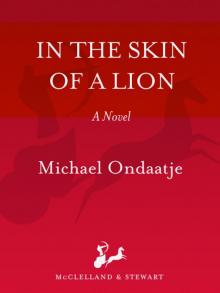 In the Skin of a Lion
In the Skin of a Lion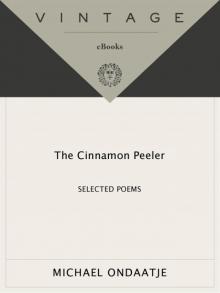 The Cinnamon Peeler
The Cinnamon Peeler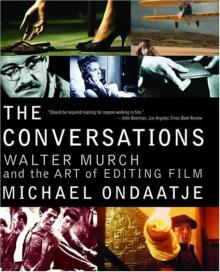 The Conversations: Walter Murch and the Art of Editing Film
The Conversations: Walter Murch and the Art of Editing Film Anil's Ghost
Anil's Ghost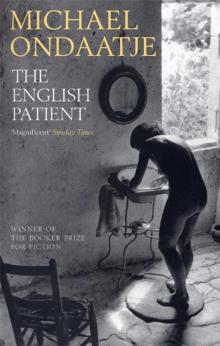 The English Patient
The English Patient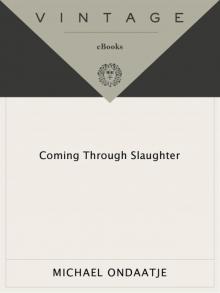 Coming Through Slaughter
Coming Through Slaughter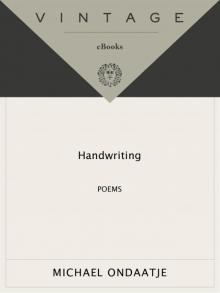 Handwriting
Handwriting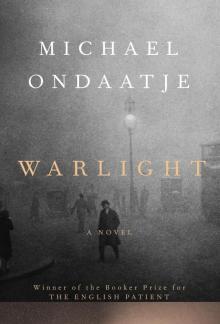 Warlight
Warlight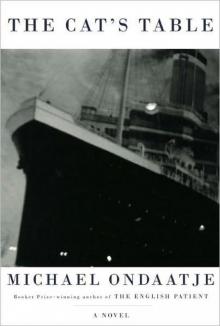 The Cat's Table
The Cat's Table Running in the Family
Running in the Family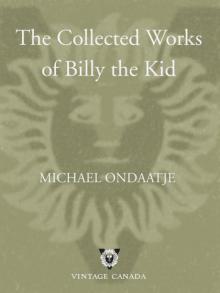 The Collected Works of Billy the Kid
The Collected Works of Billy the Kid Divisadero
Divisadero